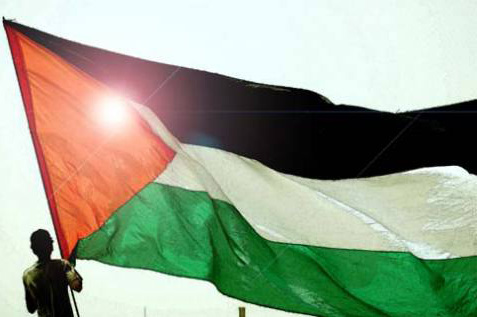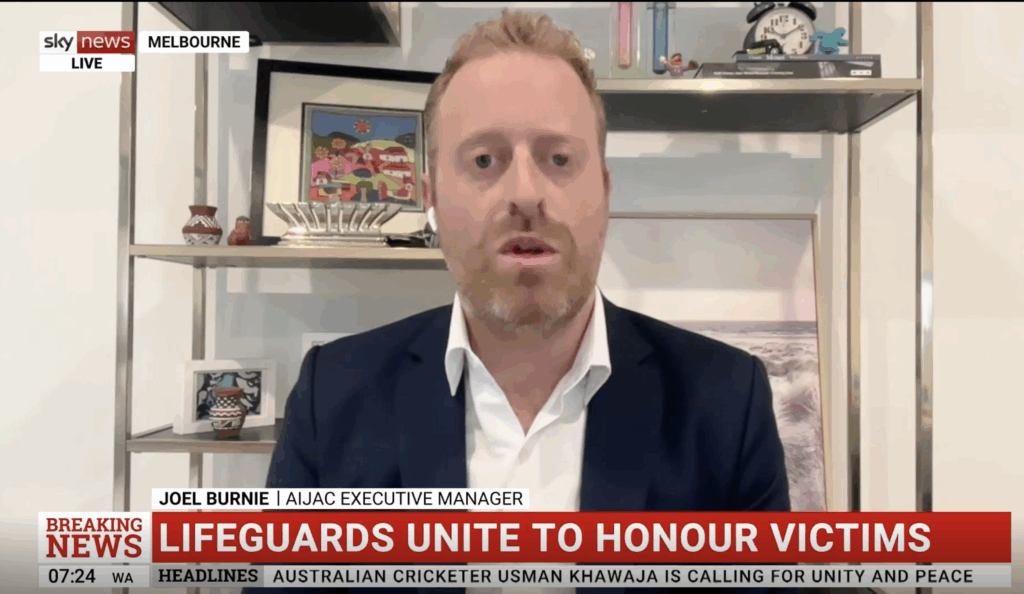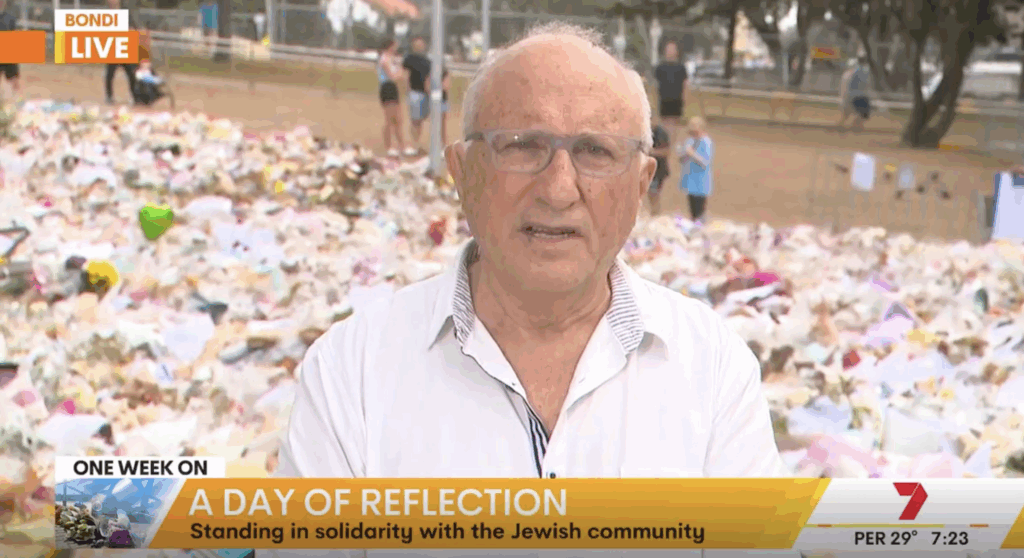UPDATES
Overview of Developments in Gaza and the West Bank
October 4, 2013

Update from AIJAC
October 4, 2013
Number 10/13 #02
Today’s Update focuses on the Israeli-Palestinian situation and highlights a number of important happenings that have taken a back seat while the mainstream media lavishes attention upon Iranian President Hassan Rouhani.
First, Khaled Abu Toameh analyses Palestinian Authority President Mahmoud Abbas’ speech at the United Nations General Assembly. Abu Toameh criticises Abbas for devoting the bulk of his speech to attacking Israel and only Israel, whilst ignoring the suffering, slaughter and expulsion of Palestinians in neighbouring Arab countries such as Syria, Lebanon and Egypt. As Abu Toameh notes, “he sees evil only in the actions of Israel and Jewish settlers,” which means specifying “that 27 Palestinians were killed by the Israel Defense Forces since the beginning of the year” but ignoring “the fact that nearly 2,000 Palestinians have been killed and thousands injured in Syria in the past two years.” To read this article, CLICK HERE.
Next, Jonathan Spyer, senior research fellow at the Global Research in International Affairs Centre, reports on the rekindling of the relationship between Hamas and Iran following the overthrow of Egypt’s Muslim Brotherhood government. Spyer writes how Hamas gambled and lost on being part of a Muslim Brotherhood bloc backed by Qatar’s petrodollars. Ominously, this rapproachment might see Hamas return to a policy of militancy, which has largely receded this year. To read this article, CLICK HERE.
Finally, Jerusalem Post analyst Yaakov Lapin writes on Israel’s efforts to minimise the chances of a third intifada breaking out against a backdrop of ongoing violence and incitement in Gaza and the West Bank against Israel. To read this article, CLICK HERE.
Readers may also be interested in:
- The Jerusalem Post reports that Israel will launch a bid for a temporary seat on the UN Security Council for 2019-20.
- Michael Herzog outlines what an acceptable deal for solving the Iranian nuclear question would look like.
- Lee Smith skewers the media for what he sees as an over eagerness to accept Iran’s new president Hassan Rouhani as a genuine moderate.
- Foundation for Defence of Democracies analyst David Weinberg discusses the anger felt by Saudi Arabia over President Barack Obama’s response to President Hassan Rouhani.
- With President Obama seemingly eager to cut deals on Syria and now Iran, Barry Rubin predicts how effective the US’ Middle East policies will be over the next three years.
- Similarly, Michael Rubin looks at the Obama Administration’s inconsistent approach to the Middle East and what it means for Arab countries and a Times of Israel report on the increasing behind the scenes cooperation between Jerusalem and the Gulf States on Iran.
- Michael Armanious argues that a perception the Obama Administration is reluctant to exercise its influence in the Middle East is placing Egypt’s Coptic Christians in a perilous situation.
- A reflective piece on the Yom Kippur War’s legacy from Australia/Israel Review regular and Jerusalem Post columnist Amotz Asa-El.
- Some examples from the many stories and comments now appearing at AIJAC’s daily “Fresh AIR” blog:
- Ahron Shapiro looks at Australian media coverage of Israel.
- Sharyn Mittelman on the repercussions of the passage of the UN’s resolution on eliminating Syrian chemical weapons.
What Abbas Missed in His UN Speech
Khaled Abu Toameh
October 2, 2013
Gatestoneinstitute.org
Abbas is more concerned about Jews visiting the Temple Mount than thousands of Palestinians who are being butchered and expelled from their homes in Arab countries; he sees evil only in the actions of Israel and Jewish settlers.
As Palestinian Authority President Mahmoud Abbas was delivering his speech at the General Assembly of the United Nations last week, one of his officials in Ramallah revealed that 250,000 out of the approximately 600,000 Palestinians in Syria have been forced to flee their homes since the beginning of the conflict there.
The official, Mohamed Shtayyeh, a member of the Fatah Central Committee, said that 93,000 of the displaced Palestinians fled to Lebanon, Egypt, Jordan and Turkey.
He added that those who fled to the neighboring Arab countries were living in harsh conditions.
Yet in his speech, Abbas largely ignored the plight of these Palestinians. Instead, he chose to direct his criticism toward Israel and the settlers.
Abbas saw no need to criticize the warring Syrian parties for killing Palestinians and driving them out of their homes.
Nor did he utter a word about Lebanon’s mistreatment of the Palestinian refugees or the fact that the Egyptians have been mistreating Palestinian refugees.
The only time Abbas referred to the plight of the refugees was toward the end of his speech, when he stated, “In the past few years and this year, Palestinian refugees have paid — and continue to pay — a heavy price for the conflicts and unrest in the region despite their neutrality. Tens of thousands of refugees have been forced to search for new places to live in.”
Abbas, of course, also ignored the fact that nearly 2,000 Palestinians have been killed and thousands injured in Syria in the past two years.
He did not, however, forget to mention in his speech that 27 Palestinians were killed by the Israel Defense Forces since the beginning of the year.
Abbas’s speech shows that the Palestinian Authority leadership considers construction of new housing units in settlements and neighborhoods of Jerusalem as being more serious than the displacement of a quarter million Palestinians.
For the Palestinian Authority leadership, the security fence in the West Bank, which has put an end to suicide bombings, is more problematic than the killing and displacement of thousands of Palestinians in Syria.
Not surprisingly, Abbas did not condemn any of the Arab countries for mistreating and humiliating Palestinians, especially in recent years.
So what if the Egyptian authorities are shooting and killing Palestinian refugees fleeing Syria? So what if the Lebanese authorities are imposing severe restrictions on the entry of Palestinian refugees? So what if Palestinians are being killed every day in Syria by the forces of Bashar al-Assad and the “rebels?”
Abbas does not seem to have time to talk about the suffering of his people at the hands of Arab governments and terror groups.
As he was speaking, thousands of Palestinians were stranded on both sides of the Gaza Strip-Egypt border due to the closure of the terminal by the Egyptian authorities. Abbas saw no need to refer in his speech to the Egyptian blockade on the Gaza Strip, which is hurting not only Hamas, but also the entire population.
As his speech has shown, he is more concerned about Jews visiting the Temple Mount than thousands of Palestinians who are being butchered and expelled from their homes in Arab countries. That hundreds of mosques and churches have been destroyed in Syria and Egypt is of no concern to Abbas, who sees evil only in the actions of Israel and Jewish settlers.
Back to Top
————————————————————————
With Morsi Gone Hamas Turns Back to Iran
Jonathan Spyer
September 29 2013
A number of recent reports have noted the revival of Iranian financial backing for Hamas, the Palestinian Islamist movement which rules the Gaza Strip. The Iranian decision appears to follow a series of meetings between officials of the Islamic Republic and senior Hamas members in recent days. It is not yet clear what this apparent Iranian rapprochement with Hamas will mean in practice. Iranian arming and support of Hamas never entirely ended, though its levels were drastically reduced after Hamas departed Damascus in November 2012.
But the reason for the rekindled romance between Tehran and Gaza is very clear — this is the latest fallout from the July coup in Egypt.
As time goes on, it is becoming clear that the military coup was a historic moment. Prior to it, there was a growing sense that the onward march of the Muslim Brotherhood and its Sunni Islamism was unstoppable. Indeed, the “Arab Spring” is best understood as beginning not with the self-immolation of the Tunisian Mohamed Bouazizi in December 2010, but rather with the Hamas coup against Fatah in Gaza in June 2007, the first political victory of Muslim Brotherhood-type Islamists against their nationalist rivals. The next key event was the toppling of Bin Ali in Tunisia and the subsequent victory of the Islamist al-Nahda party in 2011. The third — and most important — event was the bringing down of the Western-aligned military regime in Egypt in 2011, and its replacement by a Muslim Brotherhood government.
The fourth advance came in Syria, as military groups dedicated to a Muslim Brotherhood-type Islamist ideology came to dominate the rebellion, and for a moment at the beginning of 2013 appeared to be close to victory against the Assad regime.
The fomentor and financier of much of this was a single Middle Eastern state: the Emirate of Qatar. Qatari financial backing for the Muslim Brotherhood in all of these countries was essential to success. Of course, the ceaseless agitation by the enormously influential al-Jazeera channel — maintained by the Qataris — played a vital role in spreading the message.
Hamas, like many others during 2011 and 2012, saw an emergent Brotherhood and Qatari power alliance in the region. The movement’s domination of Egypt would be the jewel in the crown; Qatar would be the financier. The Hamas enclave in Gaza would take its position as an honored member of this alliance. Since it was safe to assume that vilification and hatred of the Jewish state would form an essential element of the new aligned states, Hamas was looking forward to a secure and well-padded future.
In October, Qatari Emir Sheikh Hamad bin Khalifa paid an official visit to Gaza, pledging $400 million to the Hamas administration there.
Some of the militants of the Qassam Brigades objected to the growing ties with Qatar. An alliance headed by Qatar — which ultimately relies on the West for its security — and Egypt — which remained formally committed to a peace deal with Israel — would mean the end of Hamas militancy, they claimed. But they lost the argument. Hamas thought it was part of the force set to redefine the politics of the Arab Middle East.
And anyway, how could Hamas — a Sunni Islamist movement — remain aligned with the Shia sectarian bloc that was slaughtering Sunni Muslims by the tens of thousands in Syria? They couldn’t, and they didn’t.
Unfortunately for Hamas, it has all gone horribly wrong.
In retrospect, it seems that late 2012 represented the high-water mark of the Qatar-Muslim Brotherhood project in the region. Since that time, Qatar and the Brotherhood’s various enemies have hit back hard.
Saudi Arabia and the United Arab Emirates backed a coup in Egypt, which with one stroke nullified the main gain of the Brotherhood and Qatar. The new regime in Egypt has adopted a hardline approach, banning the Brotherhood and besieging Hamas-controlled Gaza.
The Emir of Qatar retired under unclear circumstances in June 2013. The new Emir Tamim appears to be pursuing a far more cautious and modest regional policy — Qatar has been largely invisible in recent months.
In Syria, Iran and its allies mobilized and have halted the advance of the rebels. The Saudis meanwhile, with less success, have sought to curtail the influence of Muslim Brotherhood-associated factions within the rebellion.
The waning of the Qatari tide left Hamas stranded. As mentioned above, it never completely severed the link with the Iranians. Now, with Sisi’s security forces pressing against it in northern Sinai, Hamas has little choice but to turn back to the Iran-led regional bloc.
The turn back to Iran will prevent any possible eclipse of the Hamas regime in Gaza, and end any hopes that the Ramallah Palestinian Authority might have had for its return to exclusive control of Palestinian nationalism. Beyond this, it may well presage a turn back to militancy by Hamas, which has been very quiet since the conclusion of Operation Pillar of Defense in early 2013.
Ultimately, Hamas’ turn back to Iran is a testimony to the group’s new weakness. Of course, the setbacks for the Muslim Brotherhood may not be permanent. It is down, but hardly out. But for the moment, its various component parts are in retreat.
For a moment, it looked like Hamas was riding the tide of history. Then the tide turned.
Back to Top
————————————————————————
Israel Hopes to Avoid Third Intifada Despite Palestinian Rhetoric, Violence
Yaakov Lappin
IPT News
October 3, 2013
The Israel Defense Forces (IDF) lost two soldiers to Palestinian violence in the West Bank last week.
Although a third intifada remains unlikely according to intelligence assessments, the threat of terrorism in the West Bank remains ever-present, and the army has beefed up its forces to prevent an escalation of incidents.
Staff Sgt. Tomer Hazan, 20, served in the Israeli Air Force, while also working at a restaurant in Bat Yam, a southern suburb of Tel Aviv. One of his work colleagues was a 42-year-old Palestinian named Nedal Amar, who entered Israel illegally to work in the same restaurant, and who lived in the Qalqilya region of the West Bank.
Amar’s brother, a member of the Tanzim paramilitary terror group, is in an Israeli prison for his role in facilitating a 2003 suicide bomb attack.
According to Israeli security forces
Acting on the plan, he invited his young colleague to join him at his home in Bet Amin, near Qalqilya, and the two shared a taxi to the area.
After walking out to an open, uninhabited area, Amar murdered the soldier and dumped the body in a well. His plan to ransom Israel into releasing the brother was short-lived; the Israel Security Agency (Shin Bet), the domestic intelligence body, tracked him down within hours, arresting the suspect and additional relatives at their home.
Amar confessed, and led the IDF to the location of the body.
Two days later in Hebron, Israeli soldiers guarding the city’s Jewish Quarter came under fire
He had been stationed in Hebron as part of the military’s increased presence for the Jewish holidays.
Thousands of mourners accompanied Kobi to his final resting place at the Haifa military cemetery. The sniper who murdered Kobi remains at large, and security forces have launched a manhunt for him.
These incidents have caused segments of Israeli society to wonder if a third Palestinian intifada is imminent. Defense chiefs took to the media
Nevertheless, the IDF Chief of Staff Lt.-Gen. Benny Gantz noted recently
This means continuing nightly security raids across Palestinian cities, towns, and villages in which infantry forces arrest wanted terrorism suspects and, acting on high quality intelligence, break up cells being formed for future attacks.
According to senior army sources, there have been more than 30 attempts by Palestinian terrorists to kidnap Israeli soldiers this year alone.
Several terror cells that were about to carry out bombings, shootings, and rocket attacks on Israeli civilian and military targets have been broken up by the Israel Security Agency. These include a Hamas terror cell plotting to bomb a packed outdoor Jerusalem mall during the Jewish New Year
“These terror attacks remind us that even when things seem quiet on the surface, the IDF and its commanders are always dealing with a reality of operational tension,” Chief of Staff Gantz said.
The IDF believes it can keep a lid on the violence due its strong presence on the ground in the West Bank, and Israel’s tight intelligence grip of the sector.
Israel’s firm control of the Jordan Valley, the security fence, and a level of consistent cooperation with Palestinian Authority security forces have all acted as stabilizing factors that prevent a significant deterioration.
But the risk of violence spiraling out of control remains. Hamas, Islamic Jihad, the Fatah-affiliated Al Aqsa Martyrs Brigade, and lone-wolf terrorists all have the potential to set in motion a series of attacks.
In Gaza, where Hamas keeps the ceasefire with Israel, the Islamist regime is agitating for an intifada in the West Bank, and has openly stated
“We are facing a political failure for the Palestinian Authority and the beginning of a new popular intifada against Israel,” Hamas’s deputy politburo chief, Mousa Abu Marzook, wrote on his Facebook page.
“John Kerry’s $4 million economic plan [for the Palestinian Authority] will not save the day,” he added.
Hamas’s calls for an upsurge in violence are aimed at harming both Israel and the rival Fatah organization which rules the West Bank.
Fatah, for its part, continues to speak the language of extremism to Palestinians.
“My homeland taught me that it is the blood of martyrs that draws the borders of the homeland,” an official Fatah Facebook post
“When I was young, I was taught that… our wars were for the Al-Aqsa Mosque, and that our enemy is Satan, Zion with a tail,” she said.
In July, PA TV broadcast two young girls
Should the smoldering embers in the West Bank turn into a fire of terrorism and rioting once again, triggering Israeli responses, this could have a knock on effect in other tense arenas, like Gaza.
It is this scenario, of sudden deterioration in multiple arenas in a short period of time, that the IDF is preparing itself for during these highly turbulent times.
Yaakov Lappin is the Jerusalem Post’s military and national security affairs correspondent, and author of The Virtual Caliphate
Tags: Palestinians





